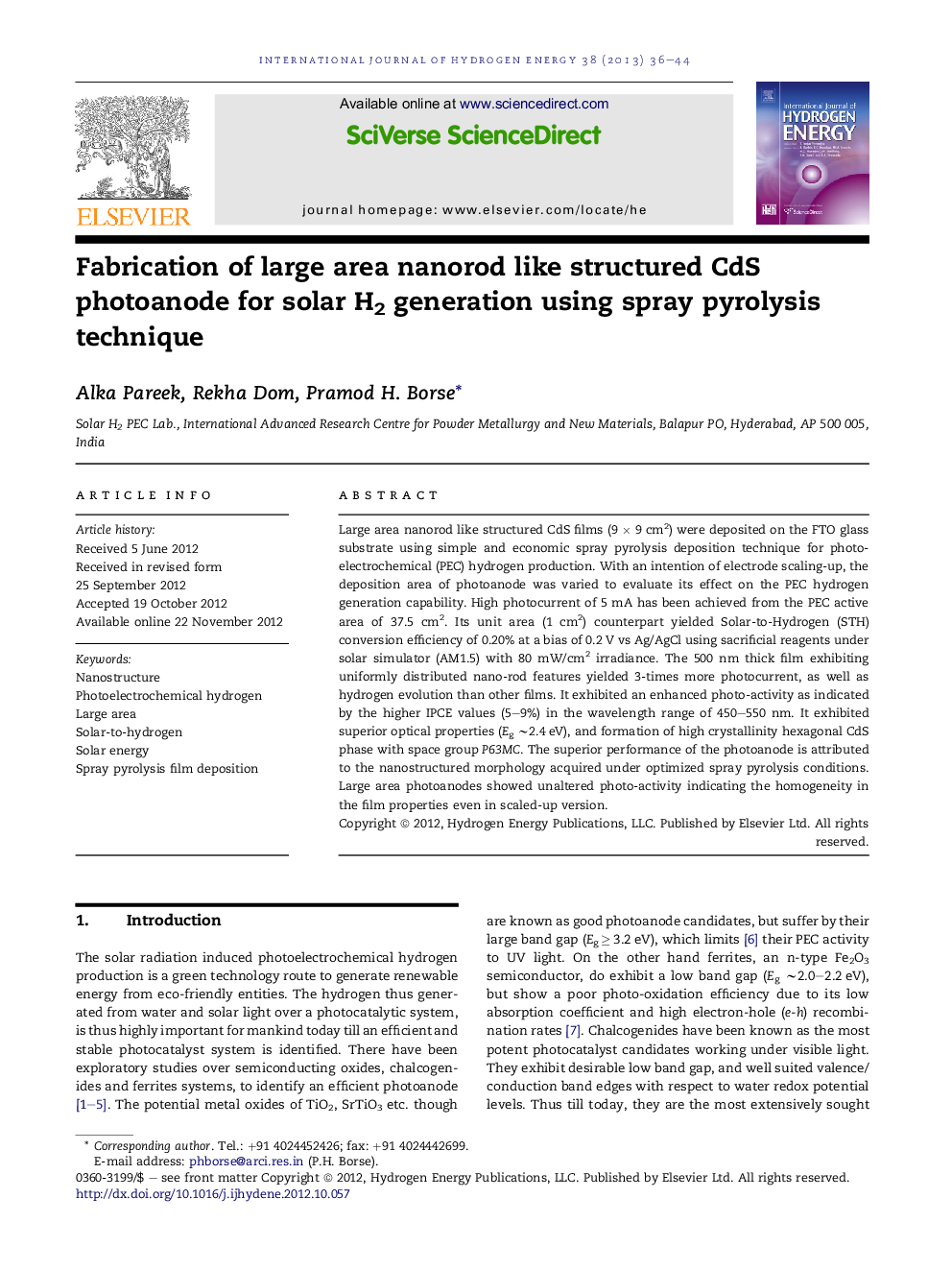| Article ID | Journal | Published Year | Pages | File Type |
|---|---|---|---|---|
| 1274347 | International Journal of Hydrogen Energy | 2013 | 9 Pages |
Large area nanorod like structured CdS films (9 × 9 cm2) were deposited on the FTO glass substrate using simple and economic spray pyrolysis deposition technique for photoelectrochemical (PEC) hydrogen production. With an intention of electrode scaling-up, the deposition area of photoanode was varied to evaluate its effect on the PEC hydrogen generation capability. High photocurrent of 5 mA has been achieved from the PEC active area of 37.5 cm2. Its unit area (1 cm2) counterpart yielded Solar-to-Hydrogen (STH) conversion efficiency of 0.20% at a bias of 0.2 V vs Ag/AgCl using sacrificial reagents under solar simulator (AM1.5) with 80 mW/cm2 irradiance. The 500 nm thick film exhibiting uniformly distributed nano-rod features yielded 3-times more photocurrent, as well as hydrogen evolution than other films. It exhibited an enhanced photo-activity as indicated by the higher IPCE values (5–9%) in the wavelength range of 450–550 nm. It exhibited superior optical properties (Eg ∼2.4 eV), and formation of high crystallinity hexagonal CdS phase with space group P63MC. The superior performance of the photoanode is attributed to the nanostructured morphology acquired under optimized spray pyrolysis conditions. Large area photoanodes showed unaltered photo-activity indicating the homogeneity in the film properties even in scaled-up version.
Graphical abstractLarge area nanorod structured photoanode has been fabricated from CdS film (9 × 9 cm2) deposited using simple and economic spray pyrolysis deposition technique. The enhanced photo-activity of this photoanode has been demonstrated by higher IPCE values (5–9%) in wavelength range of 450–550 nm. Nanostructured morphology is attributed to superior performance of the film (photoelectrode) deposited under optimized conditions.Figure optionsDownload full-size imageDownload as PowerPoint slideHighlights► Nanorod structured CdS-film (9 × 9 cm2) deposited by simple spray pyrolysis deposition. ► Large area electrode was fabricated for photo-anodic oxidation application. ► 37.5 cm2 electrode-area generated 5 mA photocurrent, no decrease in photocurrent density with large electrode-area. ► The films showed excellent IPCE of 8.5% at 460 nm photons. ► Film showed 0.2% STH efficiency viz. 8 times more H2 evolution than reference.
